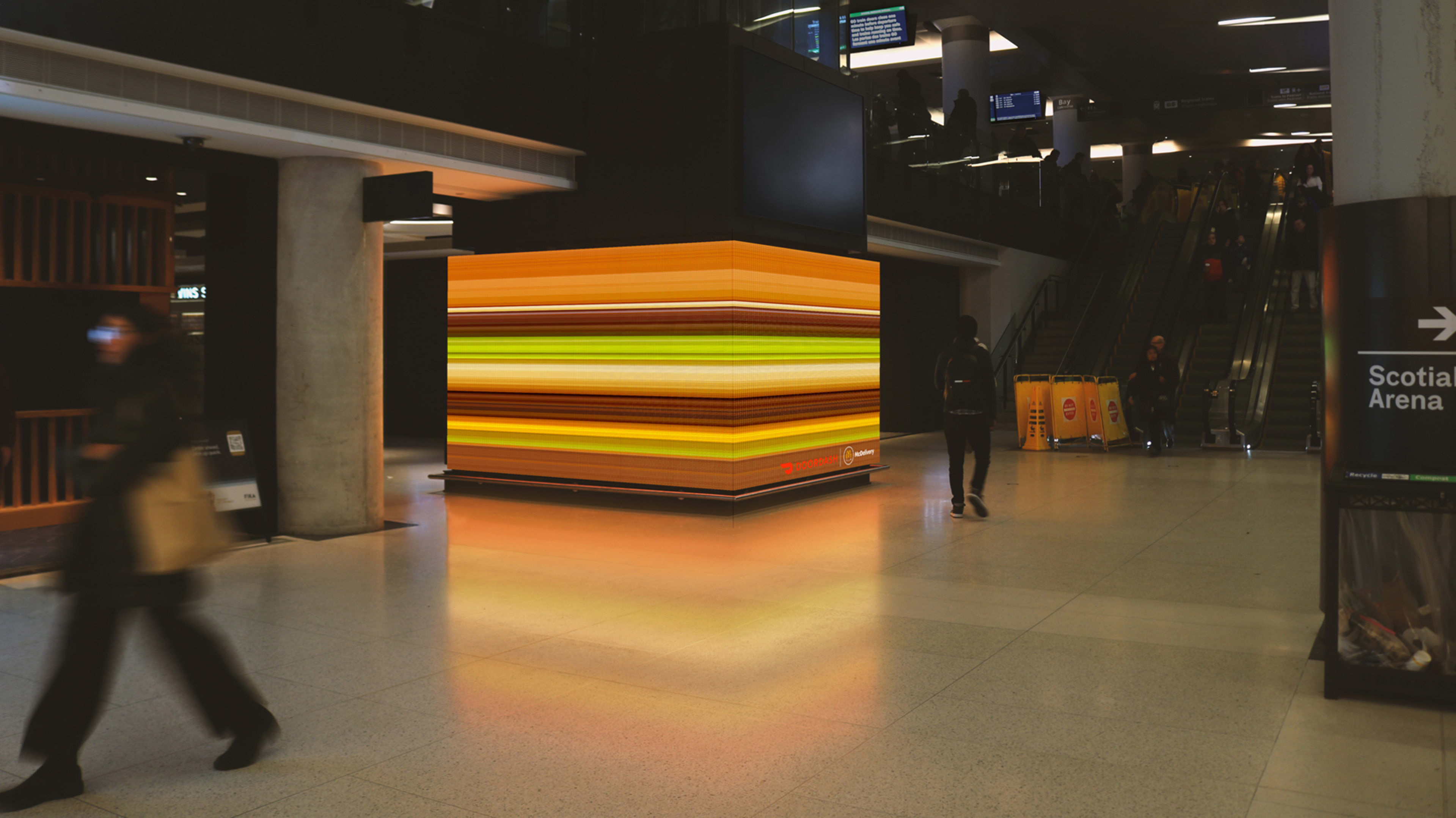If you find yourself zipping past Toronto’s Yonge-Dundas Square, or sprinting through the city’s Union Station, don’t be surprised if you get a sudden craving for McDonald’s.
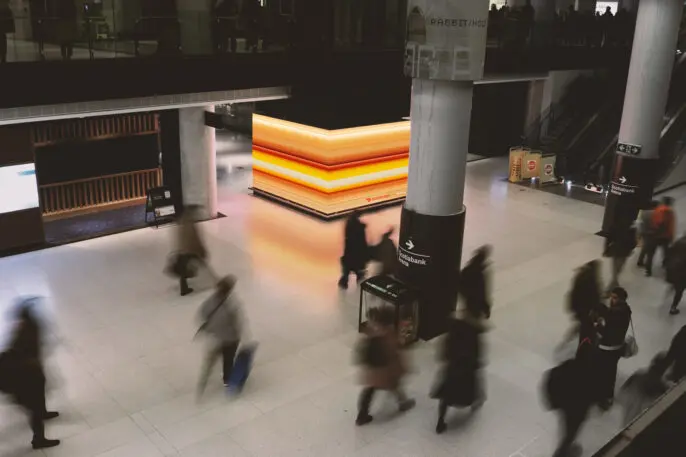
Earlier this month, the fast-food giant rolled out an advertisement to market its partnership with DoorDash Canada that highlights the benefits of a speedy McDelivery via the service. The campaign developed by creative agency No Fixed Address, called “Faster Food,” conveys the element of speed by rendering the ingredients in two McDonald’s staples into a series of horizontal stripes.
The result looks less like a fast-food ad and more like an abstract painting. It’s a savvy move that elevates the brand—and people’s perception of it—far beyond what it actually is: no drippy, greasy burger; just a minimalist, almost poetic, rendition of a Big Mac and an Egg McMuffin that appear as if they’re whizzing past you on their way to being delivered.
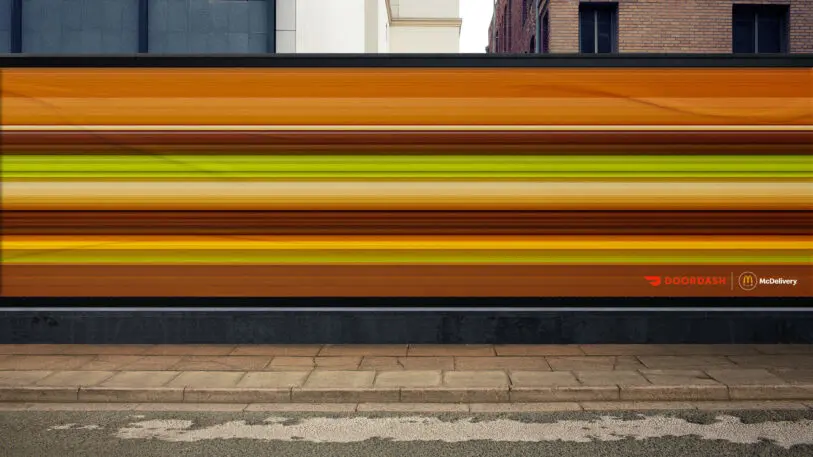
The McDonald’s partnership with DoorDash actually dates back to the end of 2020, but as Alexis Bronstorph, No Fixed Address’s co-chief creative officer, explains, this campaign is designed to “hype” the collaboration. To achieve the stretched-out look, the team broke down the individual components of, say, a Big Mac, into color blocks—including highlights and shadows—and stretched each of those colors into thin, long stripes. They then animated those stripes so they look as though they’re streaming across the screen.
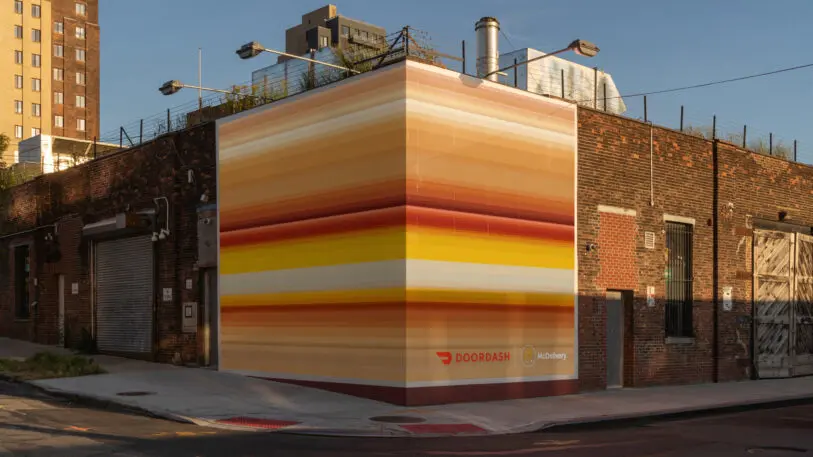
This isn’t the first time that a fast-food ad has had the feel of a poster from art school. In fact, consumer brand ads have been getting more and more artsy of late. In 2014, Ogilvy & Mather New York cleverly used negative space to promote Coca-Cola’s then-new eco-friendly packaging. And in 2021, Pepsi commissioned an origami artist to fold the wrappers of famous burger chains and hide the Pepsi logo in those folds (suggesting a burger is better with Pepsi than Coke).
McDonalds, in particular, has taken a liking to abstract ads that riff on the brand’s immense recognizability factor. In 2020, ad agency TBWA\San Juan presented some of the brand’s food icons as blurry paintings, complete with paint streaks, with the words “Say no more” at the bottom. A year later, creative agency Leo Burnett London and designer David Schwen launched billboard ads depicting a stack of words, piled like the ingredients of a burger: think “muffin, egg, sausage, cheese, muffin” for an Egg McMuffin. And in 2021, TBWA\Paris teased the opening of a new McDonald’s in France with a series of pixelated posters of a cheeseburger and french fries.
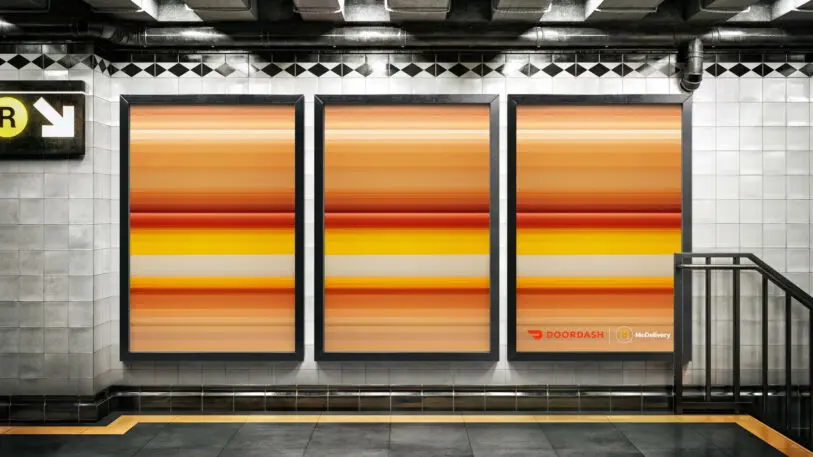
The new Canadian campaign seems cut from the same cloth, emphasizing that this bold approach could only work for the kind of brand that serves 70 million people across the world in more than 38,000 restaurants and 120 countries. “The Big Mac . . . you can say that in any country and people know what that is,” says Reid Plaxton, a senior art director at No Fixed Address.
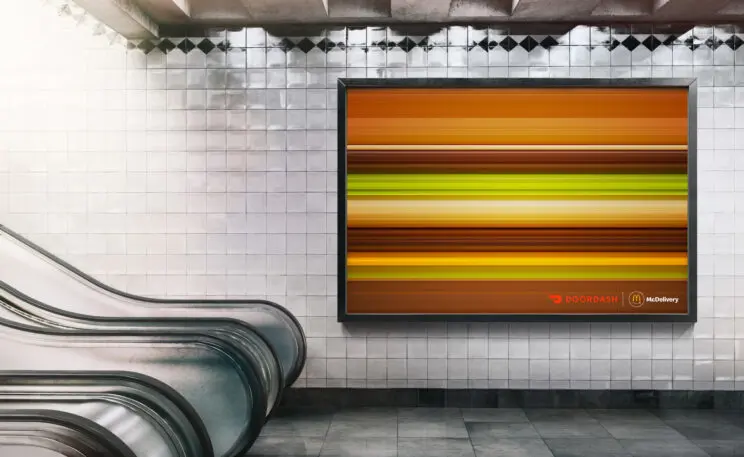
And sure enough, going abstract means that some people just might not get it—but there’s something to be said about an ad that stops you in your tracks, even if it is to puzzle out its meaning. “When we create any piece of work, that’s part of the fun, for people to make that connection,” Bronstorph says. “The best work doesn’t tell you what you need to know, it gives you a little moment to go ‘ah,’ and that’s what makes it more memorable.”
Recognize your brand’s excellence by applying to this year’s Brands That Matter Awards before the early-rate deadline, May 3.
